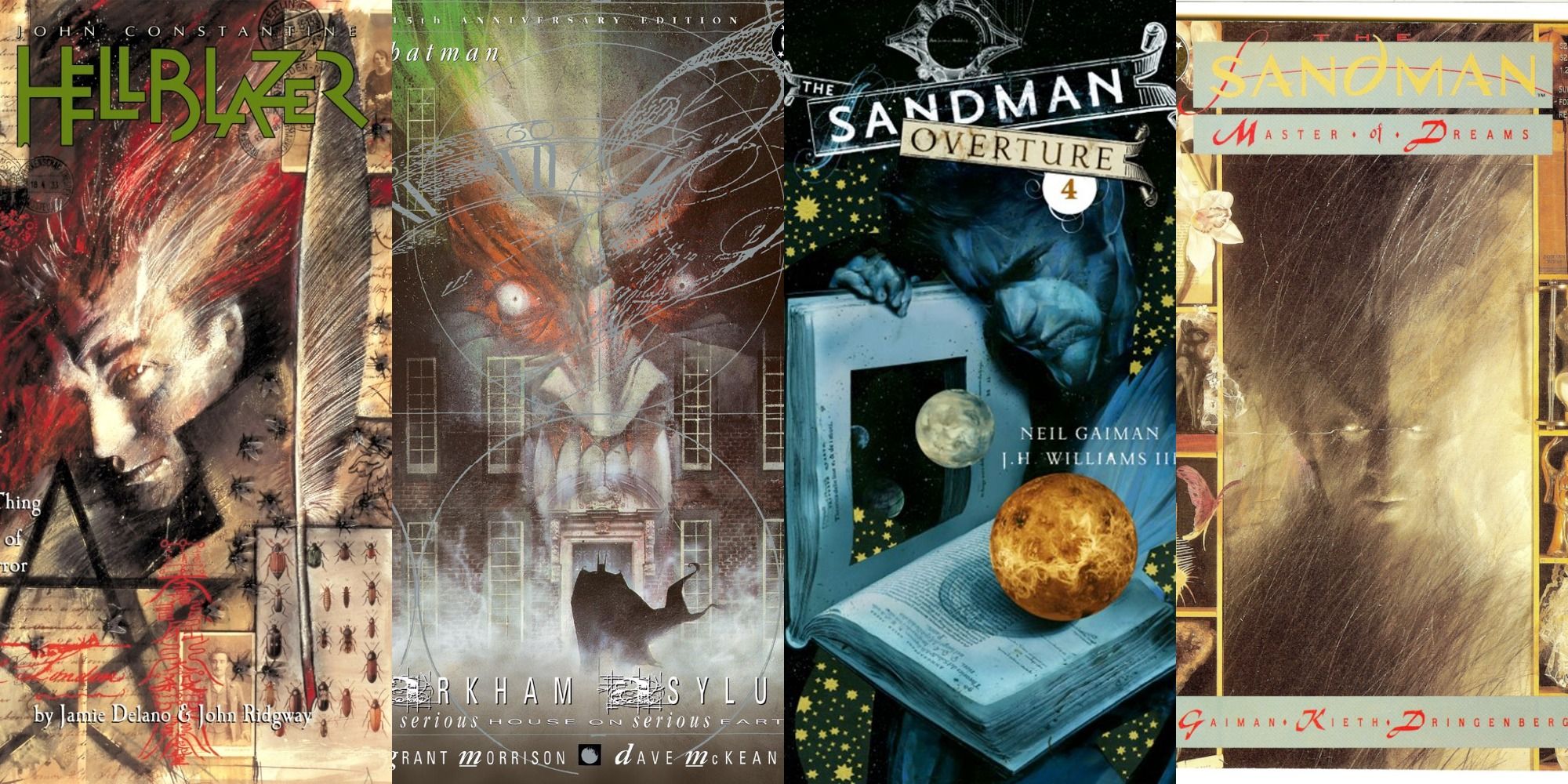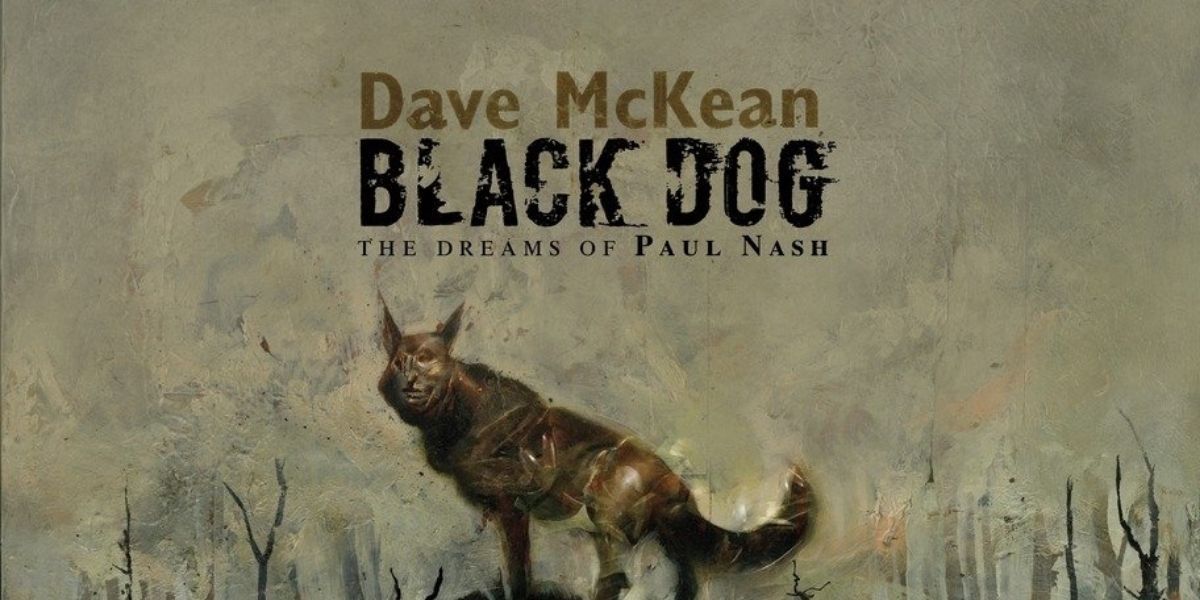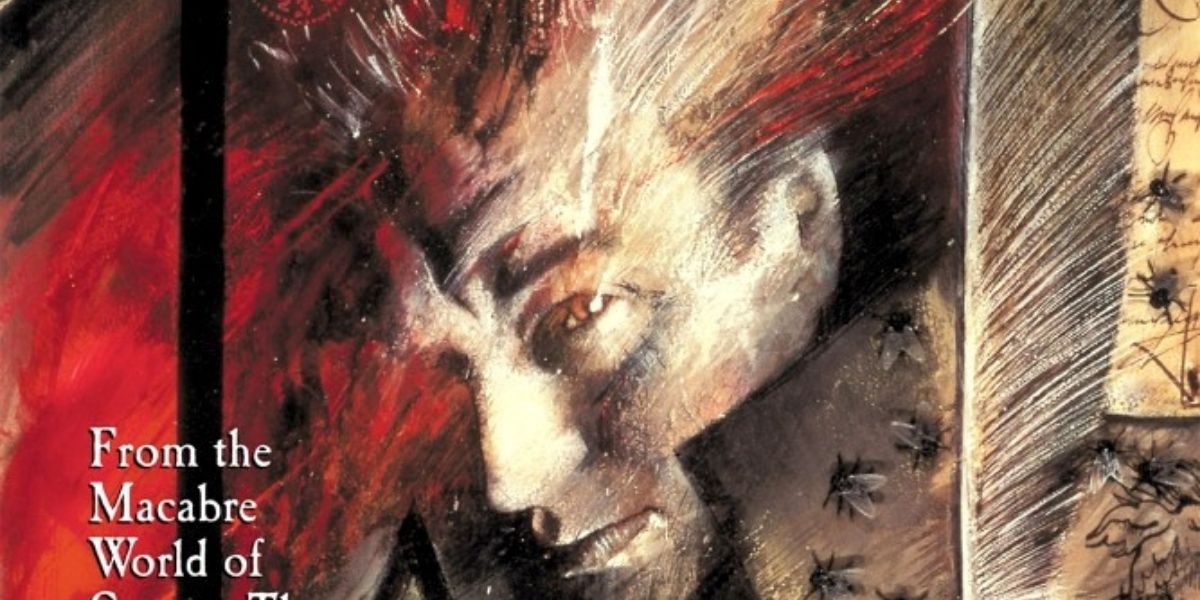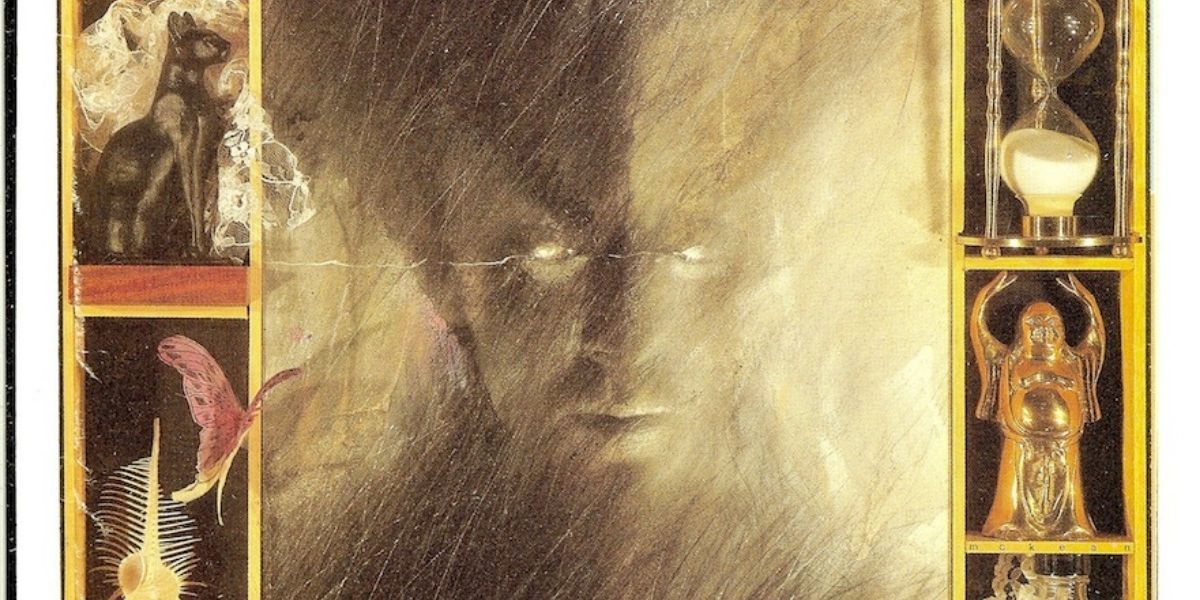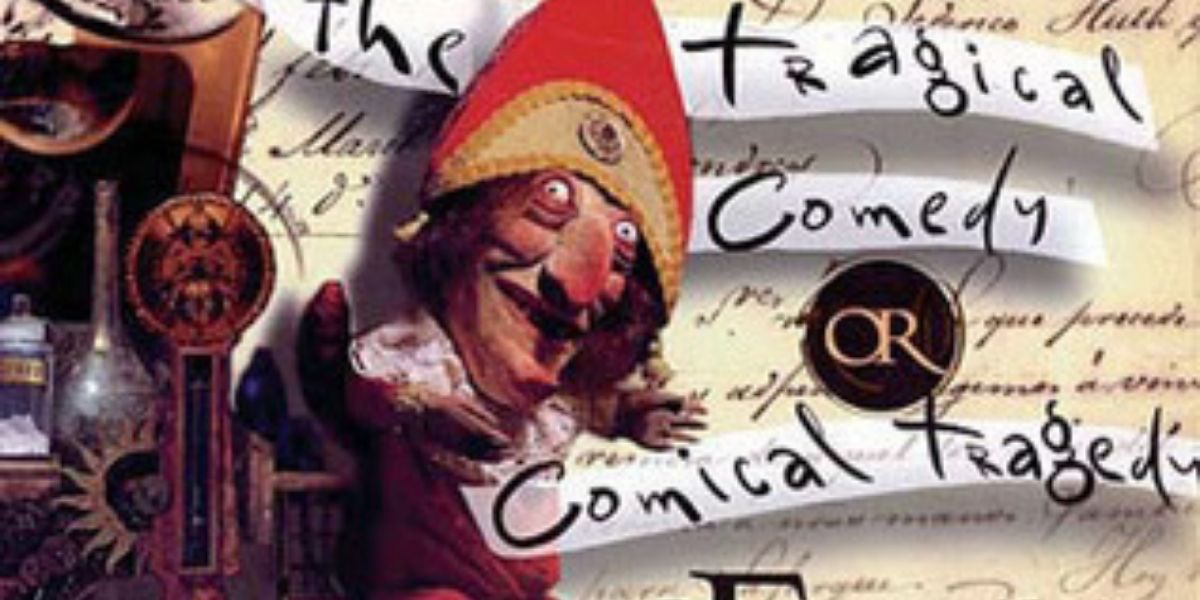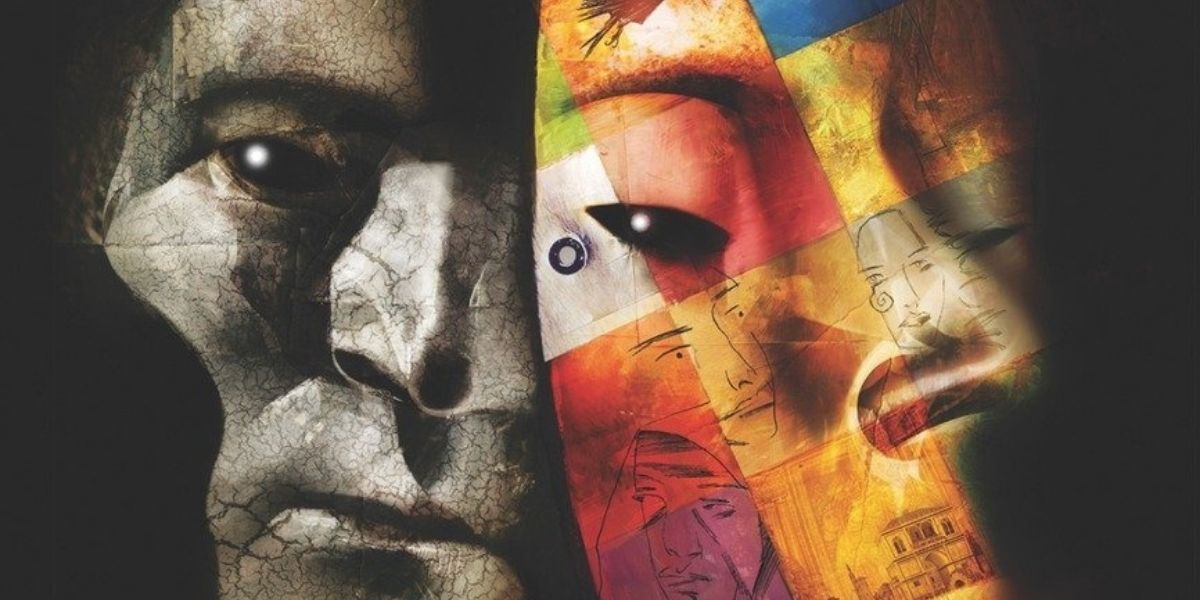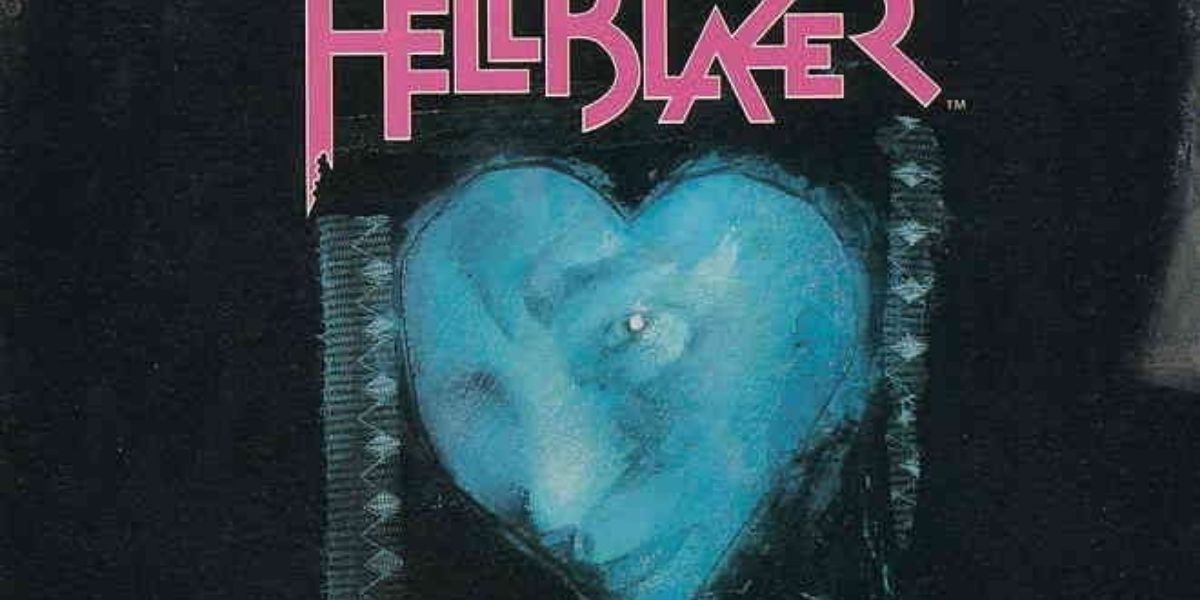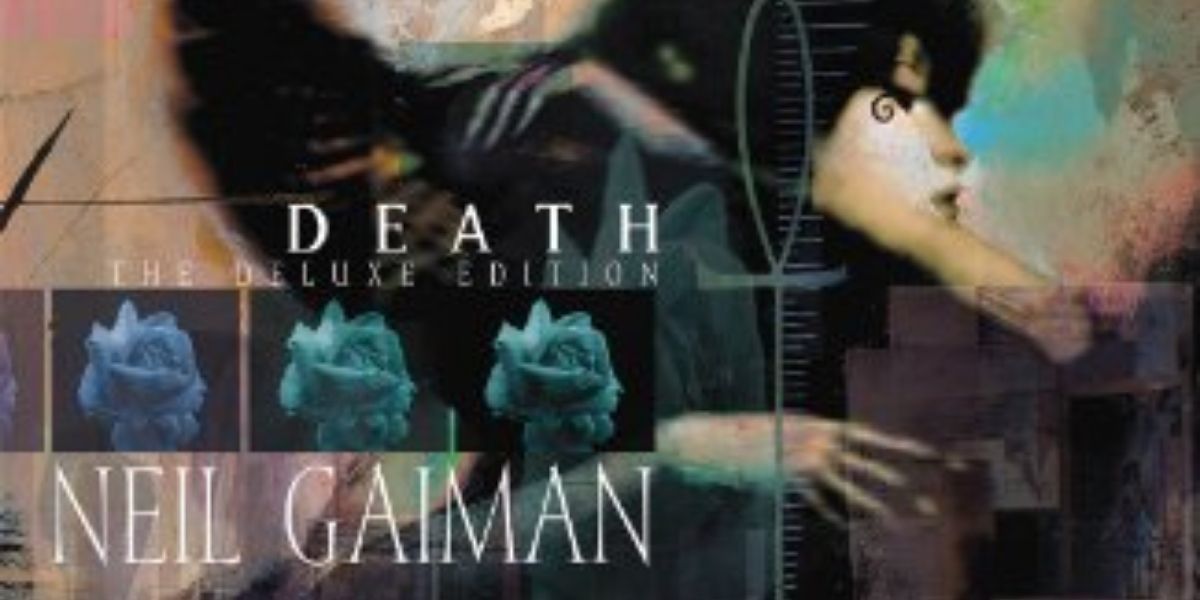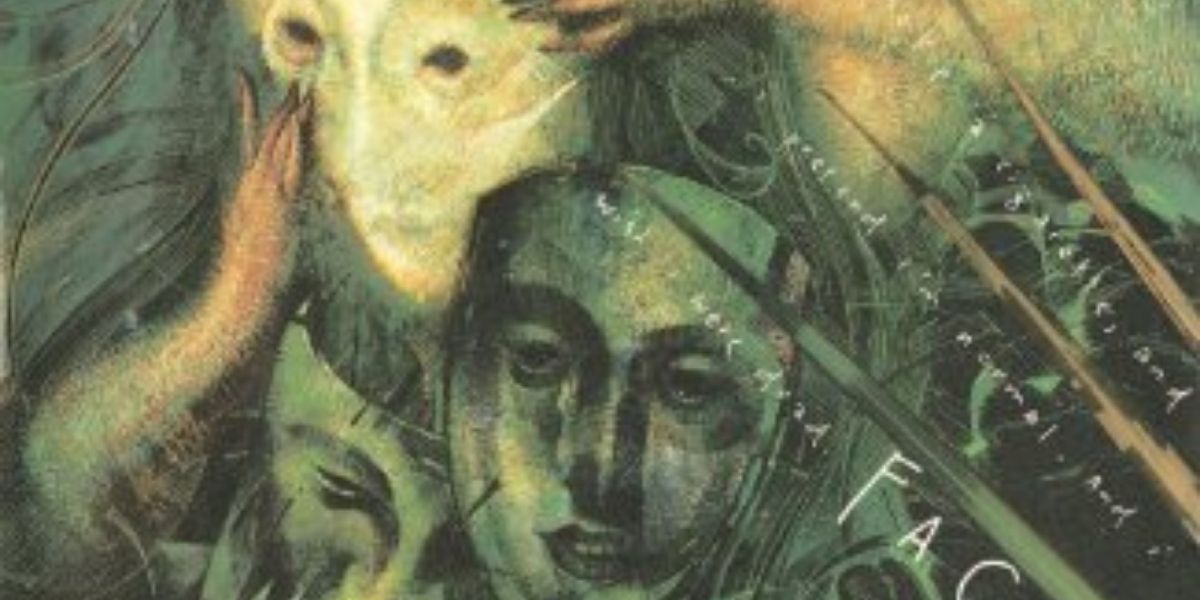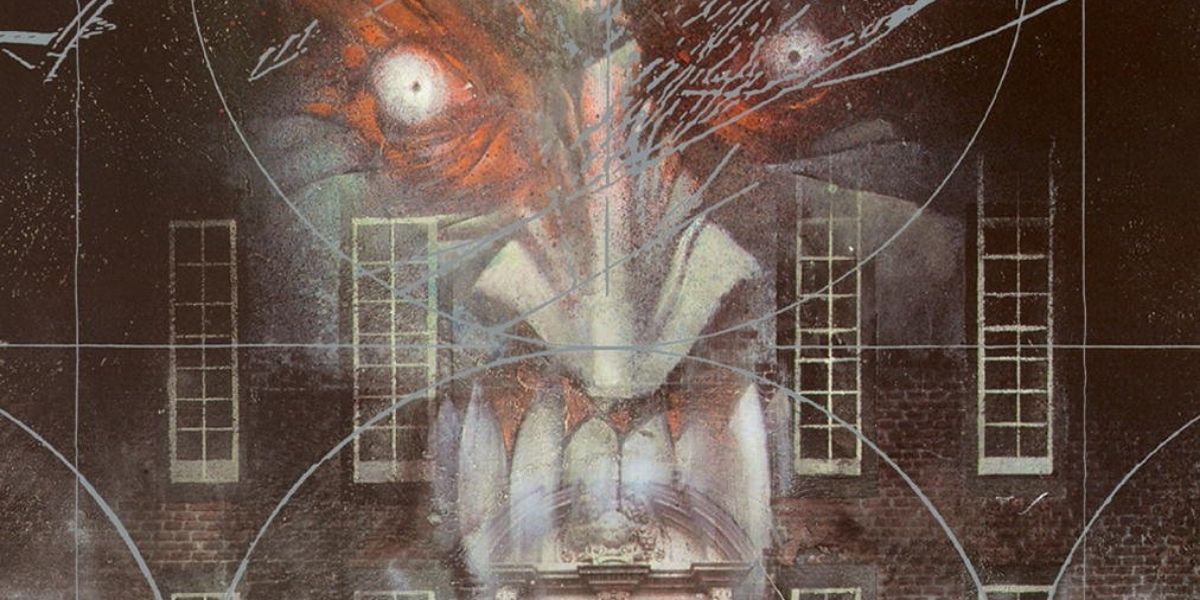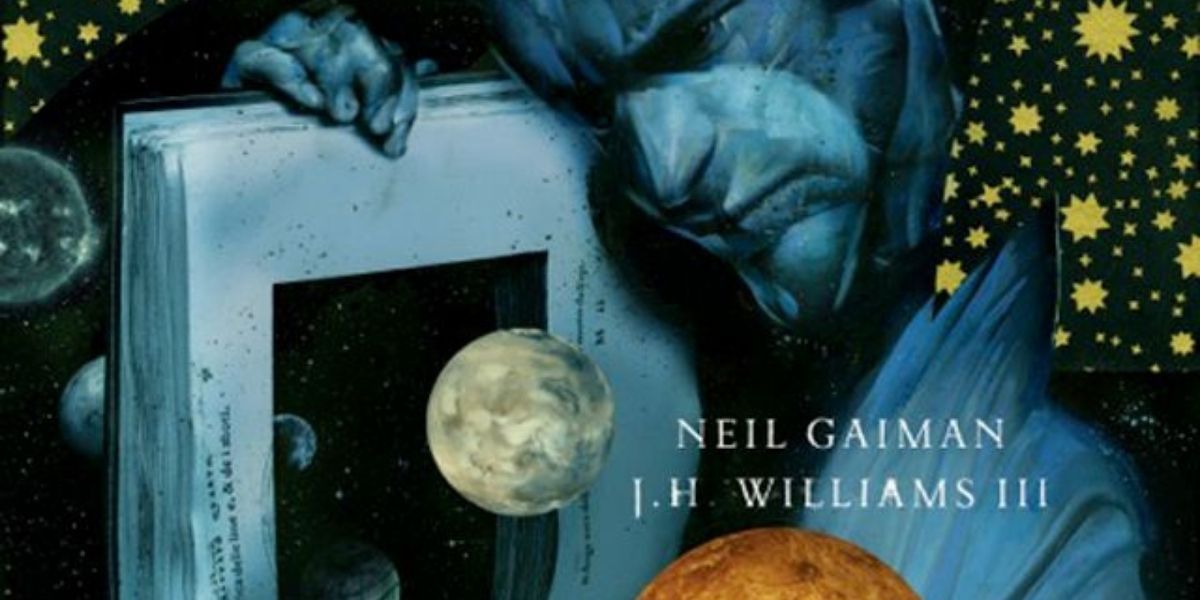Dave McKean has been a force in the comic book community because of his unique and ever-evolving style that includes everything from photography to standard pen and ink. One of his highlights has been creating unique covers for comic titans like his frequent collaborator, Neil Gaiman.
Though McKean's covers are incredibly diverse, he has consistently mastered capturing the emotion and tone of the story, many times without featuring the protagonist or a single character. With his newest work, Rapture: A Sokol Graphic Novel due out this July, it is a perfect time to explore just some of his artistic highlights.
Black Dog: The Dreams of Paul Nash
Published by Dark Horse Comics in 2016, Black Dog is a tour through time and memory of the British surrealist painter, Paul Nash, who was known for his depictions of war-torn landscapes.
The cover McKean creates here is one of blatant destruction. Though the story has a variety of colors and styles, McKean chooses to show the connection directly with Nash's material. There is barbed wire amongst trenches in a barren wasteland. Even more haunting is the black dog at the top watching over it all. And yet, there seems to be a hint of beauty in all this terror, much like Nash's own pieces.
Hellblazer #1
Draped in a balance of light and shadow, McKean's iconic cover to Hellblazer may not introduce the world to John Constantine (who appeared first in The Saga of Swamp Thing in 1985) but shows where his further exploits will take him.
Symbols and photos litter the page alongside faint red markings and insects. With all the commotion on the cover, it forces Constantine to blend in with the background where, for those who know the magician, is where he would rather be. Showing that he could be anywhere, at any time, when the forces of darkness creep in.
The Sandman #1
The DC Comic that started a phenomenon. The 1988 first issue of The Sandman has McKean present a marvelous concoction of images to frame the faded protagonist, Dream. He surrounds the Dream Lord in a perfect balance of light and darkness, adding a sense of mystery to his morality.
Additionally, McKean had carefully chosen items like clocks, books, and cats to foreshadow just some of the ideas that will be touched upon once the reader dares to open up the cover and continue.
The Comical Tragedy or Tragical Comedy of Mr. Punch
A 1994 Gaiman graphic novel that builds on his frequent themes of memories and perception. The story follows the narrator as he untangles his memories from his childhood, told alongside the puppet show, Punch and Judy.
On the cover is where readers are first introduced to the title puppet character, Mr. Punch. His creepy image stares directly at his "audience," bringing shivers to their spines. Connecting directly with the themes of memory, McKean places Mr. Punch atop a collage of clocks and frames with a backdrop of scribbled pages that seem more like entries in a diary.
The Sandman: Endless Nights
The pairing of Dream of the Endless and McKean continued with the 2003 Vertigo graphic novel, The Sandman: Endless Nights, which shared new stories specific to each of the Endless.
Smartly, McKean shows two faces for the Lord of the Dreaming. The first is checkered with bright colors, which can be interpreted to show the many faces Dream wears throughout time and place, an aspect that was introduced at the very beginning of the series. And Dream's "true" face, seen just below the surface of this, shows Dream drenched in shadow, as readers typically find him. His standard glowing white eyes peer forward while the rest of his body bleeds into the black, hiding away with his secrets.
Hellblazer #27
A fitting cover for a heartfelt Neil Gaiman story, this 1990 Hellblazer cover keeps all the color contained to just the center so as to be surrounded by the darkness of this ghost's coat. Much like the story suggests, even in the most horrifying times, there is still compassion inside of everyone.
It might seem schmaltzy to have John Constantine's face inside of the blue heart (a color choice connecting directly to the plot of the story) but it fits so well for a series that usually displays horrific images for adult ghost stories.
Death: The Deluxe Edition
A 2012 hardcover collection of stories surrounding the character Death, Dream's sister, which includes the mini-series, Death: The High Cost of Living. The punk-inspired Death can be seen slightly blurry on the cover, but fans can still make out her trademark makeup. Her arms can also be seen up in what can be interpreted as a hug. Which unfamiliar fans might find a bit surprising, but it is a perfect way to frame the caring sister of the Endless.
The sigil that Death wears takes center stage here, besides flowers in full bloom as an almost humorous contrast to the title. Aside from the small splashes of blue, the colors here do not pop and intentionally left more subdued, as to not forget the seriousness of its subject matter.
The Sandman #20
The Sandman series did not typically have covers that illuminated the characters featuring in the issue. Like this 1990 issue, McKean would choose to hint at the stars of the story by use of symbols of color schemes.
Element Girl is the focal point in this issue, with her hatred for herself and the life she lives hiding behind masks. McKean uses a literal approach, showing a bouquet of green masks along the bottom, as a nod to Element Girl's signature hair color.
Arkham Asylum - A Serious House On A Serious Earth (Anniversary Edition)
Grant Morrison's bizarre ode to Alice's Adventures in Wonderland, by way of the infamous DC Universe mental institution, fits perfectly for McKean's style. The story takes place on April Fool's Day and follows Batman as he enters Arkham to free hostages after the inmates have taken over.
Though the original bat-displayed cover is a wonderful cover itself, the 2004 Anniversary Edition presentation creates a perfect introduction to the organized chaos that is to follow. Given Batman's back, he leads the march right into the belly of the beast as a disturbing look of the Joker looms over him.
The Sandman: Overture #4 (Variant)
Neil Gaiman's iconic character, Dream of the Endless, has been connected to stories since his debut in DC Comics. Dave McKean's 2014 fourth issue variant cover to its prequel series, The Sandman: Overture, projects this connection of tales right to the audience.
Yes, the images of stars directly connect to the storyline, but it transcends this. Much like the reader, Dream opens a book to worlds popping from the pages, showing a universe of infinite possibilities. For those finding solace in these characters, one cannot help but feel connected to this image.

